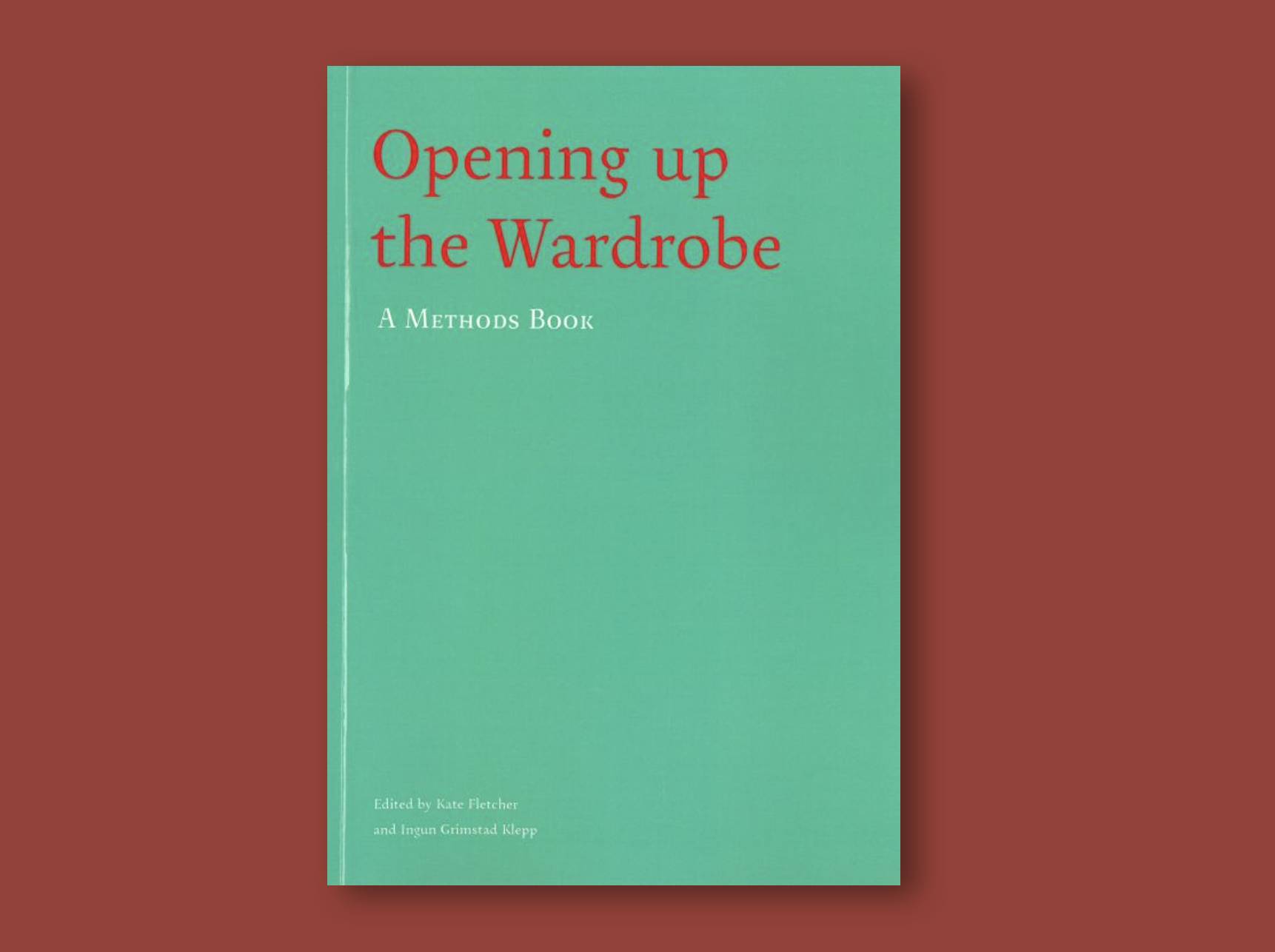Book Review: Opening Up the Wardrobe
Kate Fletcher and Ingun Grimstad Klepp (eds.), Opening Up the Wardrobe, Novus, $43, 195 pp., 2017
When I discovered that Kate Fletcher and Ingun Grimstad Klepp had edited a radical new book, Opening Up the Wardrobe, published by Novus Press, I thought, yes – the fashion world is ready for this. Functioning like a manual, the publication brings together 50 practical methods of approaching the “wardrobe” by 50 contributors from four continents. These methods, first used between 1995 and 2015, are designed for “exploring the actions, relationships and material contents of our wardrobes.” Opening Up the Wardrobe is a covetable read for any sustainable fashion enthusiast; however, it also raises questions about the accessibility of scholarly insight for everyday consumers who, arguably, have the power to agitate the most impactful change.
In editing this book, Fletcher and Klepp were motivated to understand the “real lives” of clothing in the context of the wearer’s priorities, skills, and ideas. Although there’s nothing entirely new about this aim, the collection’s focus on “wardrobe audits” brings a noticeably different perspective to recent scholarship about sustainable fashion practice. Specifically, the publication features how-to guides that readers can follow to carry out experiments using the contents of their own closets. It is divided into four sections: “investigating wardrobes,” “exploring individuals, practices and dynamics through clothing,” “transforming wardrobes,” and “materiality”. These categories group particular experiments together based on their similarities at different stages in the user’s relationship with their clothing.
Contributors include a mixed bag of practitioners, from engineers to futurists, to fashion stylists, such as Holly McQuillan, Amy Twigger Holroyd, Timo Rissanen, Mathilda Tham, Sophie Woodward, and more. They form a plurality of voices, which bring together a constellation of starting points that split off in all sorts of directions to explore how we form, keep and use our wardrobes. Q&A’s with each contributor are featured, gaining insight into their motivations, findings and further resources.
Using this book as a jumping off point, Fletcher and Klepp encourage readers to recreate, tinker with and combine the step-by-step instructions to conduct their own wardrobe audits. You don’t need to read this book cover-to-cover; instead, pick and choose the methods that resonate as you flip through. My personal favorites include, “Method 25: Diary Keeping About Consumption Habits and Practices” by Anna Hedtjarn Wester and Magdalena Petersson McIntyre, and “Method 35: Questioning the Role of Consumption in Contemporary Life by Undertaking to Wear Only the Clothes in a Wardrobe for a Lifetime” by Jonnet Middleton. Since these methods speculate new relationships with our clothing, a new vocabulary is needed to classify them. The book’s “Glossary of New Terms for Wardrobe Research” begins to solve this problem, suggesting terminology like “fashion transect” and “clothing archaeology.” This glossary marks a practical step forward for sustainable practice as the fashion industry wrestles with an ongoing identity crisis about what kind of fashion world it wants to be accountable for.
As you can imagine, Opening Up the Wardrobe is not the kind of book you’ll find on the shelves at your local bookstore. It is for those who rummage around the forgotten corners of Amazon on the lookout for independent, alternative publications on fashion, culture, and sustainability. The audiences best placed to understand and learn from this publication are academics, writers, fashion students, industry influencers ,and educators. It is for those who are already wary of fashion’s problematic relationship with sustainability, who have mastered – and are now bored with – basic repair and reuse guides, and are eager to challenge themselves.
In other words, Opening Up the Wardrobe doesn’t necessarily attempt to burst the academic bubble that often shrouds alternative, cerebral thinking on sustainable fashion in everyday life. Ironically, the book aims to empower change at the garment’s use phase by addressing “readers from all backgrounds” while simultaneously excluding them from doing so. It takes more than access to step-by-step instructions to help build one’s confidence and interest in experimenting with one’s wardrobe against the dictatorship of the mainstream fashion industry. Since the book’s nuanced and technical insights rely on the reader’s awareness of basic sustainability concepts to be fully appreciated, its relevance to a general readership of mass market consumers who, arguably, most need to adjust their use-phase habits, remains unclear. Occasionally the diagrams, charts, and graphs used to illustrate each method are also vague as information such as exact measurements and duration times appear to be missing. A certain level of confidence is assumed in the reader to comfortably overlook these discrepancies and take charge of how the collection’s contents serves their interests. As someone who regularly reads non-fiction about fashion and sustainability, I also found that the way this book presents its findings, although comprehendable, is a little dispassionate and at times, indulgent. It reads like a science textbook; its repetitive report-like formatting and lack of attention-grabbing visuals simply feels a little dull for a subject as creative as fashion and dress in everyday life. Unfortunately, I can imagine that Opening Up the Wardrobe might give off a sense of exclusivity to potential readers who are willing and able to live more sustainably, but find themselves jaded an industry overwhelmed with greenwashed platitudes, technical research findings and abstract concepts.
The practical tools, new habits and advice that Opening Up the Wardrobe provides are long overdue for fashion-industry insiders. Using this resource, we can make a start at edging beyond the wisdom of make-do-and-mend to test the boundaries of what else our wardrobes might and could be.



